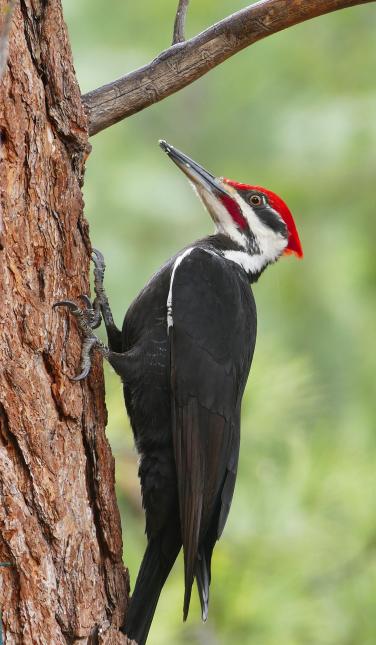Unveiling the Tricks of Woodpeckers: Actions, Habitat, and Extra
Woodpeckers, with their distinct actions and specialized adjustments, have long fascinated scientists and nature lovers alike. These remarkable birds possess a variety of fascinating secrets that dropped light on their survival methods, environment preferences, and elaborate interaction approaches. By revealing the mysteries surrounding woodpeckers' actions and environment choices, a deeper understanding of these avian wonders arises, using a glance into their fascinating world. So, what makes these birds genuinely exceptional, and exactly how do they browse their atmosphere with such accuracy and ability? Let's check out the captivating realm of woodpeckers and unravel the enigmatic details that make them such interesting subjects of study.
Woodpecker Actions Insights
In analyzing woodpecker behavior, an interesting display of specialized abilities and adaptations arises, shedding light on their impressive environmental particular niche. Woodpeckers, understood for their distinct drumming on trees, possess a selection of behavioral attributes that contribute to their survival and success in their setting.
Additionally, woodpeckers show a distinct feeding actions characterized by their capability to remove bugs from tree bark utilizing their specialized beaks. Their long, barbed tongues aid in recording prey, while their solid neck muscles offer security and precision during pecking activities. This feeding strategy enables woodpeckers to accessibility covert insect larvae and remove them with remarkable efficiency.
Environment Preferences and Option
What elements influence the habitat preferences and selection of woodpeckers? One essential element influencing woodpecker habitat choice is the availability of suitable nesting sites. Woodpeckers typically prefer woodlands with a mix of fully grown trees that give enough possibilities for dental caries excavation.
Furthermore, woodpeckers show a preference for habitats with a bountiful supply of food resources. They are mostly insectivorous, eating beetles, ants, larvae, and other insects located in worn out timber or tree bark. Woodpeckers tend to prefer woody areas with a diverse insect populace to satisfy their dietary demands.
Additionally, the presence of dead or worn out trees is one more essential factor in woodpecker environment choice. These trees not only give food sources however additionally use ideal substrate for cavity excavation. Dead trees are crucial for the maintenance of healthy and balanced woodpecker populaces, as they play an important duty in the woodpeckers' life process and community characteristics.
Feeding Practices and Diet Regimen Structure
Woodpeckers demonstrate a specialized feeding habits concentrated on foraging for insects within different environments. In addition to bugs, woodpeckers additionally consume tree sap, fruits, nuts, and seeds, adding range to their diet regimen depending on the season and accessibility of food resources.
The foraging strategies of woodpeckers are well-adapted to their arboreal way of living (Woodpeckers in Florida). Their capacity to dig deep into wood not only offers them with food however likewise assists in find out here producing nesting tooth cavities and establishing areas. Woodpeckers play a critical duty in keeping the wellness of woodlands by regulating insect populaces and helping in the decay of wood. Comprehending their feeding practices and diet composition is important for conservation initiatives intended at maintaining these special and useful birds.
Drumming Sounds and Interaction
Using rapid drumming sounds on numerous surfaces, woodpeckers employ a distinct type of communication to signify area limits and attract friends. This drumming habits is not only a method of communication yet likewise works as a means for woodpeckers to develop their presence within a certain area. The intensity, rate, and pattern of the drumming can convey vital info to various other woodpeckers around.
Woodpeckers use drumming audios to announce their visibility in an area and to advise off prospective burglars. The loud official website and repeated nature of the drumming offers as a clear signal to other woodpeckers that the location is already asserted. This helps in lowering disputes and decreasing physical conflicts in between individuals.

Survival Adaptations and Specialized Makeup

Conclusion
In verdict, woodpeckers show special behaviors, such as drumming sounds for interaction, and have specialized anatomy for survival in their picked environments. Their feeding practices and diet make-up additionally demonstrate their flexibility to different environments. By recognizing these elements of woodpeckers, researchers and preservationists can much better protect and maintain these interesting birds and their communities.
Comments on “Woodpeckers in Florida: Identification Tips and Habitat Preferences”